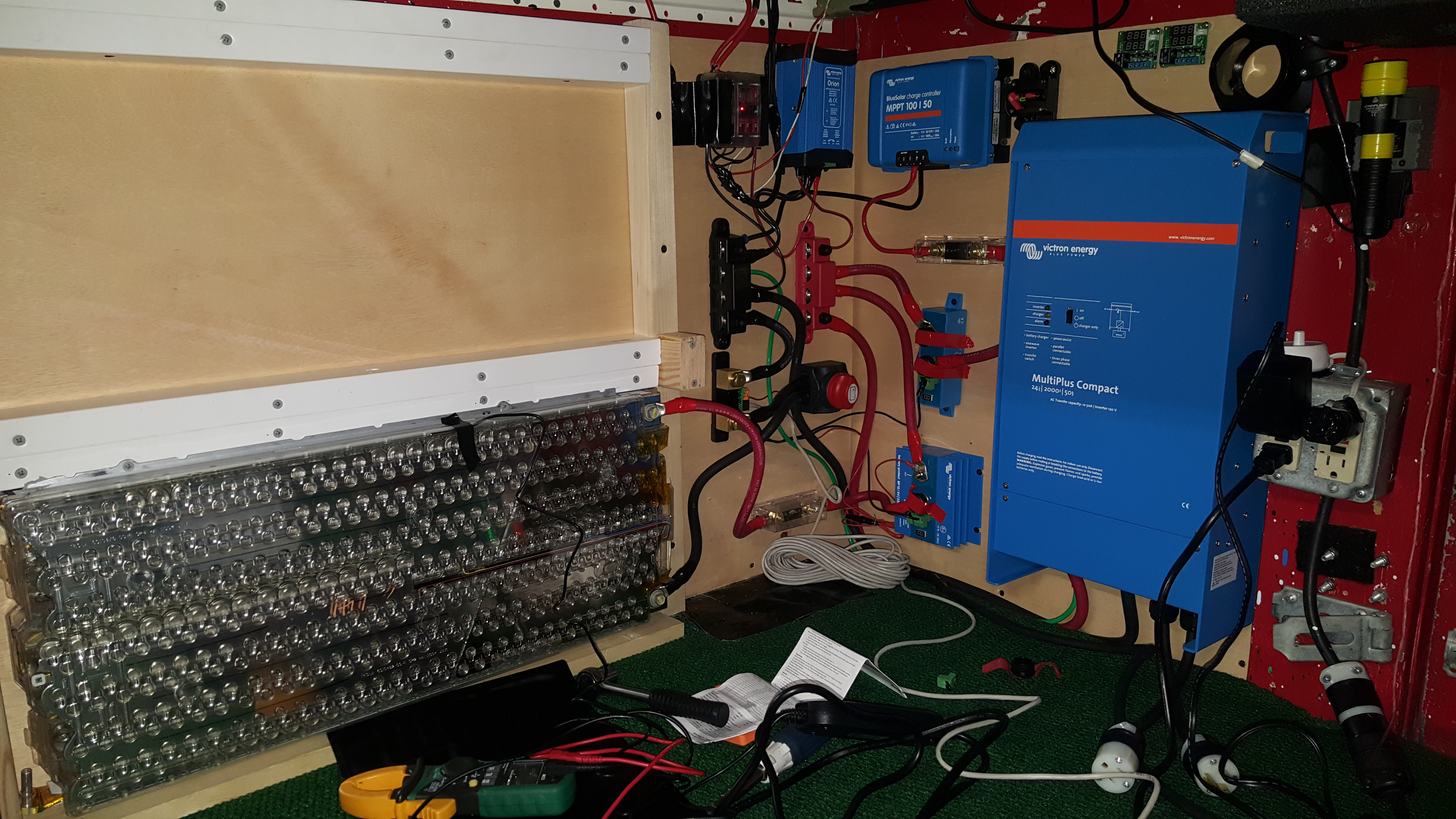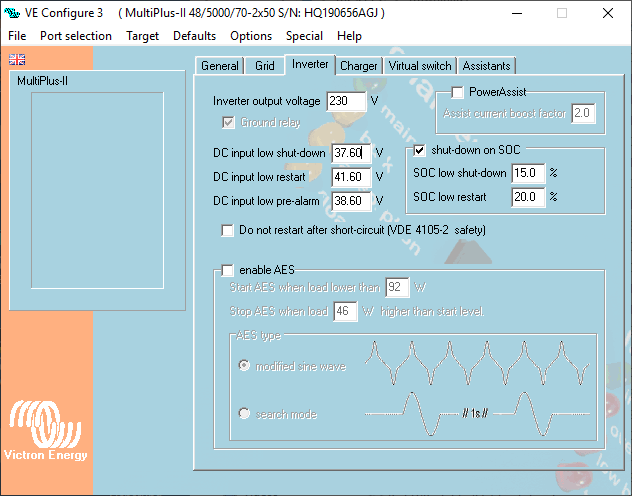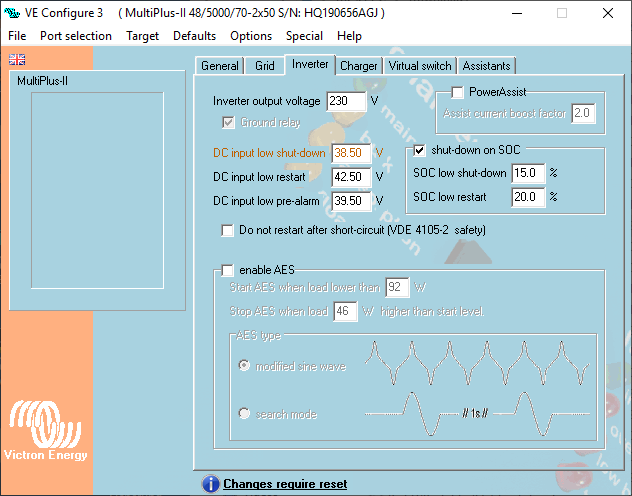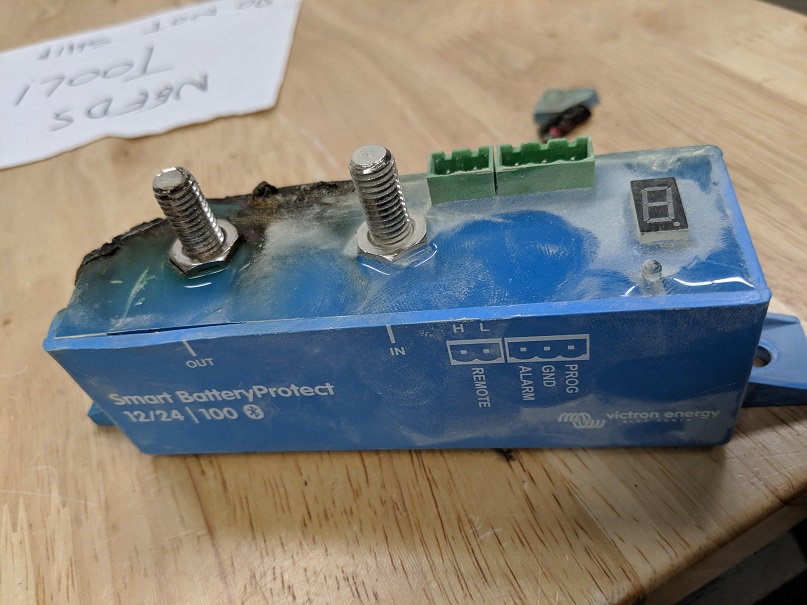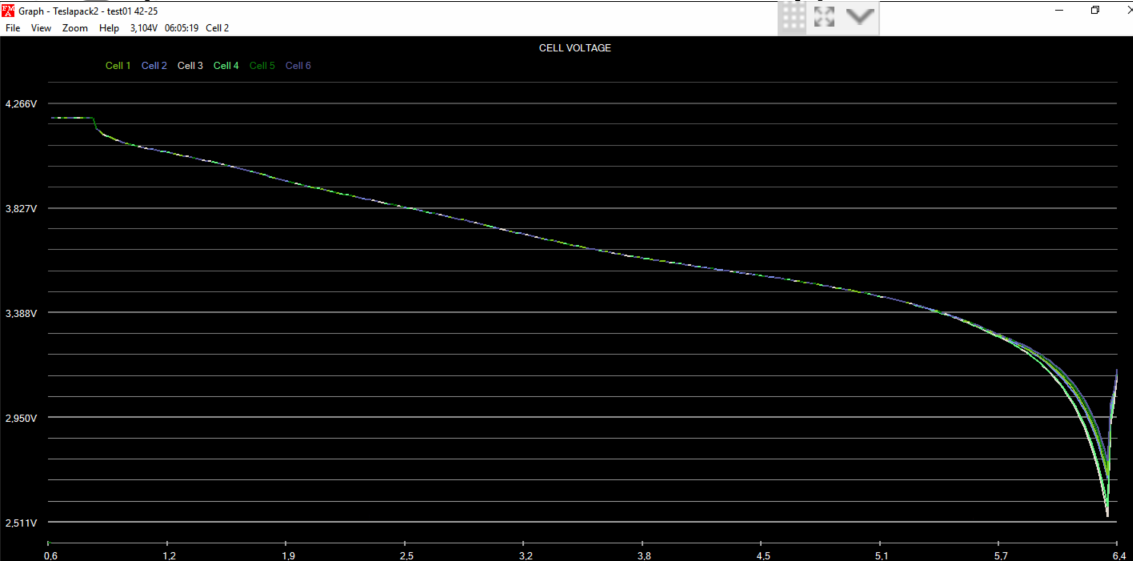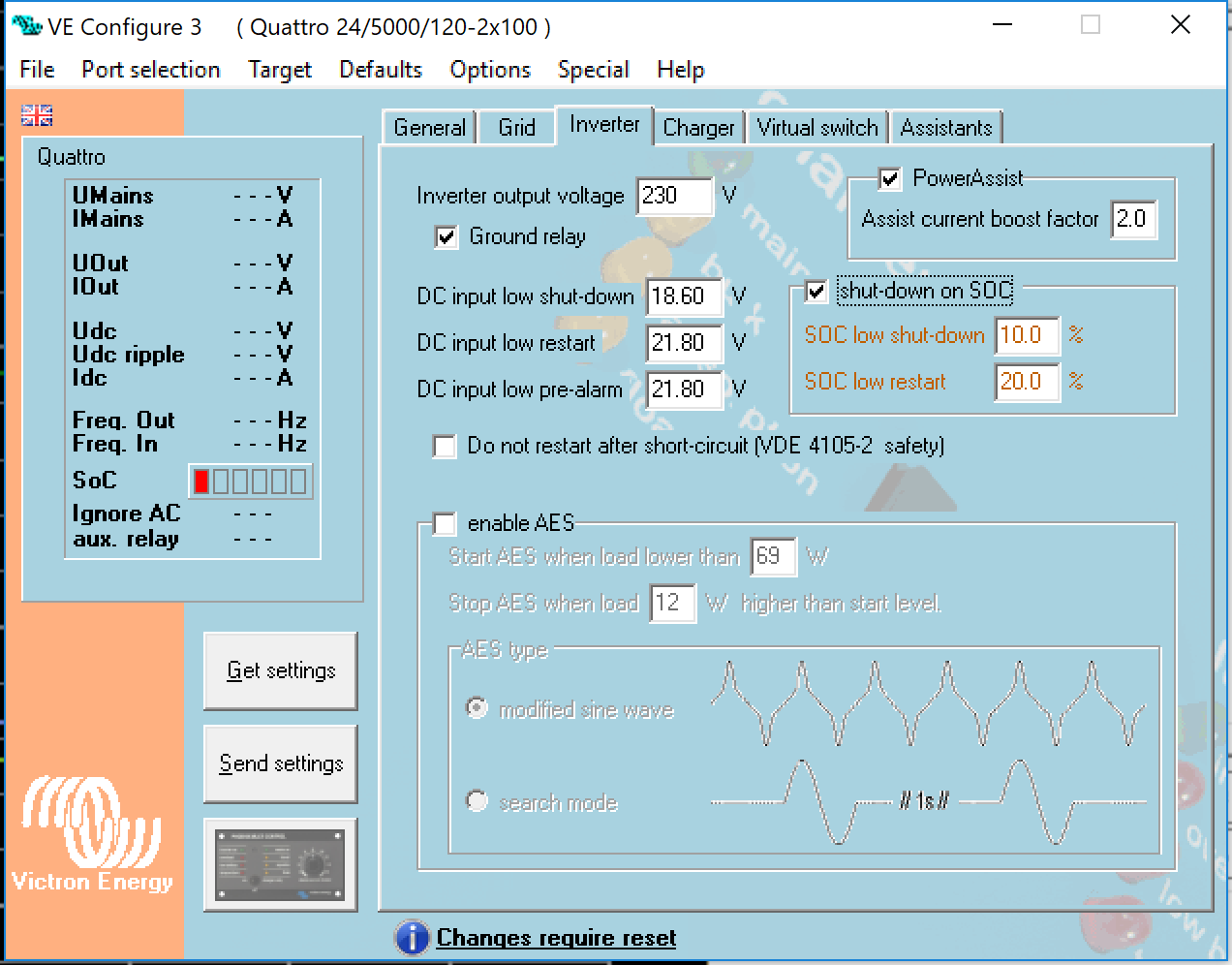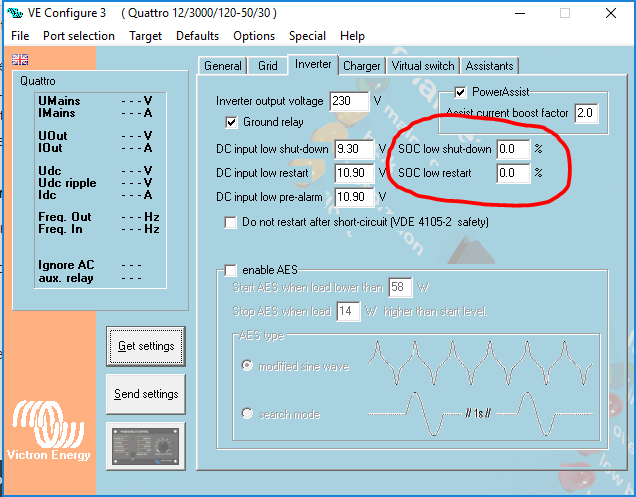Anyone else using a Tesla battery? I'm surprised to find that I can not turn on my inverter below 21.8V. Do I have to return this inverter?
The tesla battery is supposed to be 20% SOC at 19V, 100% SOC at 25V. Please help me utilize my full battery. Thanks.
